Hospital traditional method (normal paperwork) lacks an efficient way to request and track medical records being used inside the department.
To handle this problem, we tried to build a tracking system into our software as a tool for the hospital to manage their physical records status and reduce the time to find records.
I started the research by collecting user feedback from our customer support teams, then conduct the interview with some of the nurses working with medical records as a method to get ourselves into their problems and behaviors.

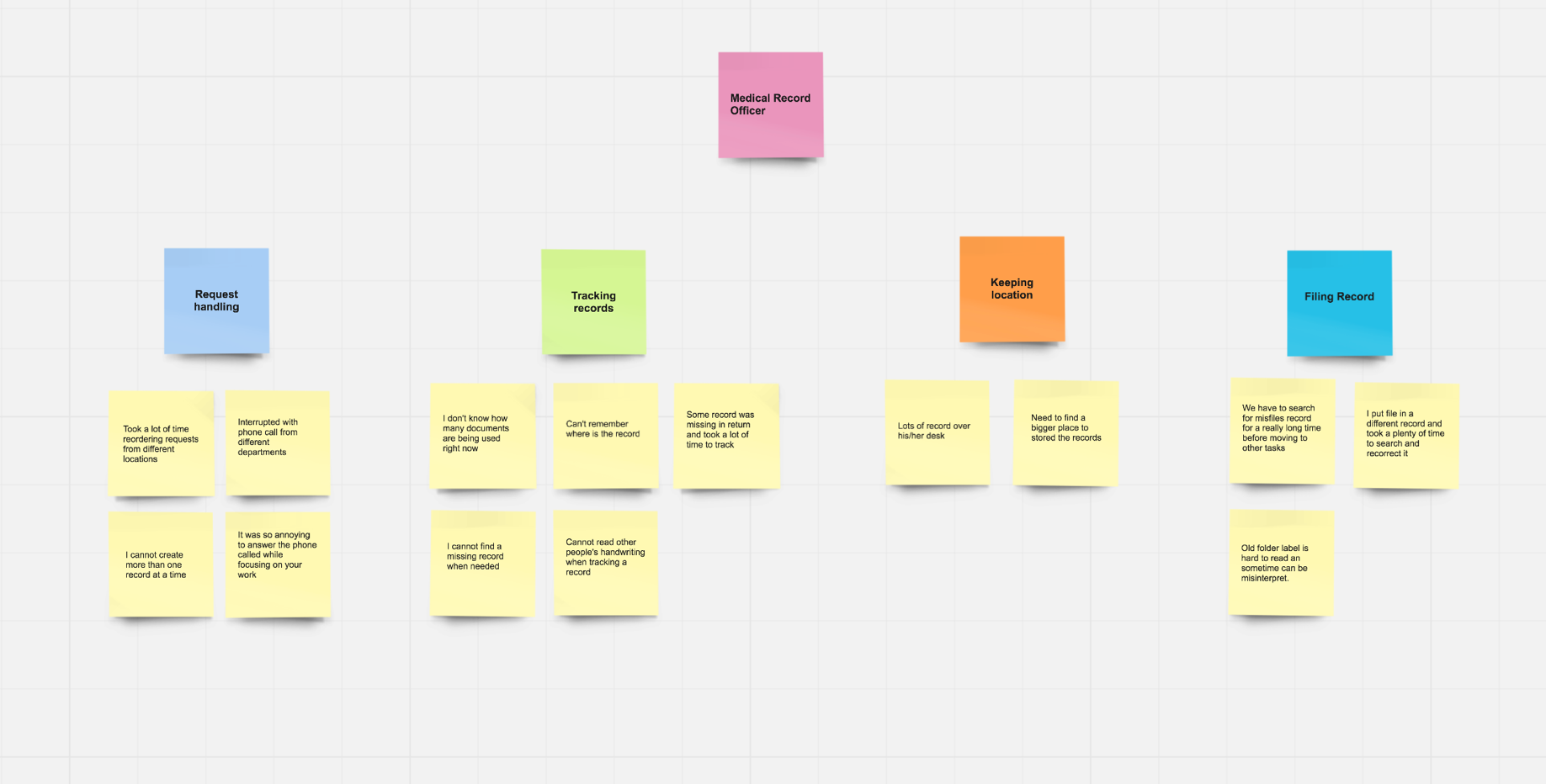
After addressing all feedbacks to the board by categories, we then establish our personas to see emotions and figure out part of the process that they struggle the most. Categorized by two type of user; department nurse who is requesting documents and medical record officer who is working with all requests and medical record management.


We divided their process into four main sections; Preparation, Requesting records, Receiving records and Returning records. Finally, by analyzing all the information we got from the journey, we put our development ideas into each section.

First, we sat down together and tried to illustrate our ideas on the board about the direction to solve user problems from the findings.


Changing all process into a full electronic health record system was considered as a laborious option because it requires a lot more efforts to translate all of the physical data into the digital form. Additionally, some policies applied to specific documents not being able to stored electronically
As an optimal solution according to the timeframe, our team decided that the system will focus on the workflows that users struggle the most including record requesting, tracking and updating the status of each record. Finally, we listed down our improvement goals.

Be able to track medical records and reduce time spent on finding a document that has been missing.

Improve the overall record requesting process and returning process.

Avoid several human mistakes which could be occurred while managing a large amount of record.
Based on the feedback we got, I created the overall software flow that matched with our personas.

I begin the design with wireframe sketches to illustrate our ideas with stakeholders as the quick way to generate different ideas to discuss and retrieve useful feedbacks

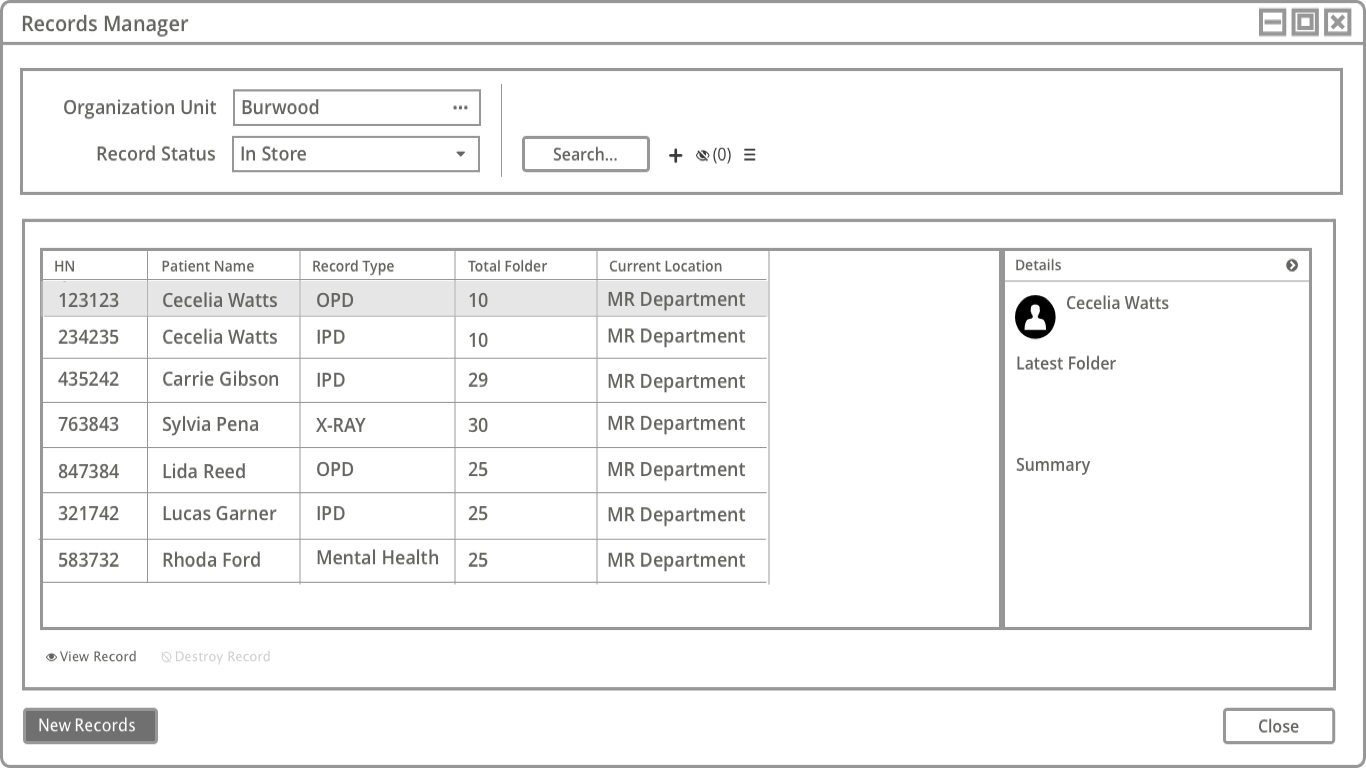



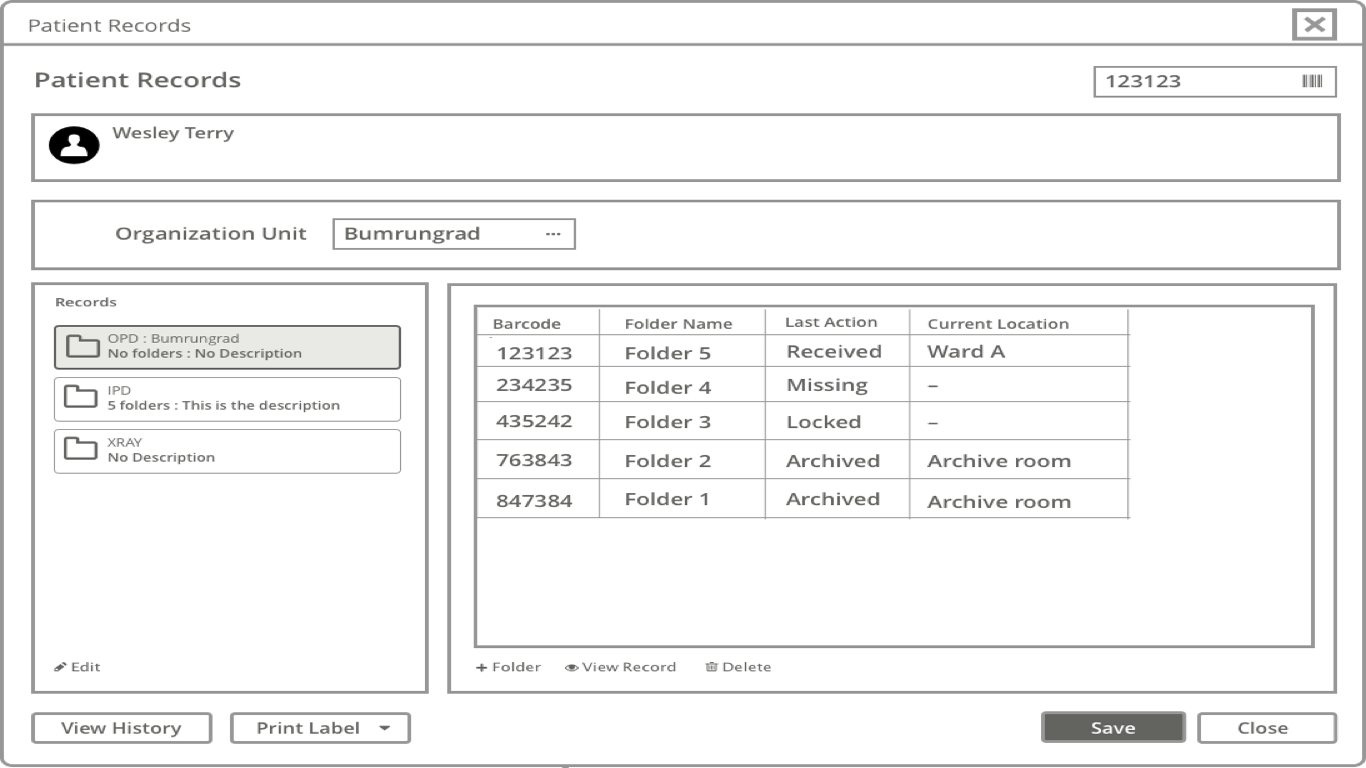
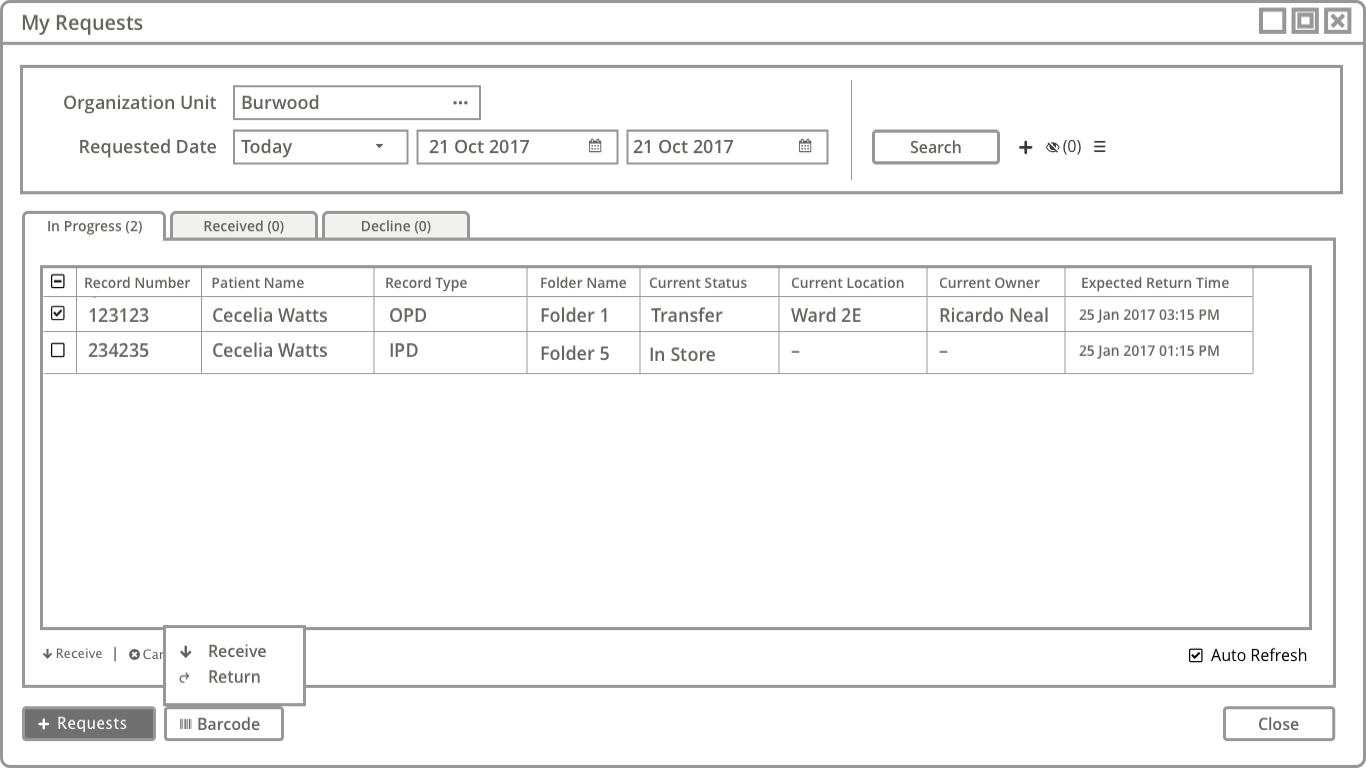




Our session were conducted by both moderate and unmoderated testing to analyze the usability of our products. I use my laptop (moderated) and Skype plus a screen (unmoderated) sharing to track a user interaction with the screen.
We invited 6 participants including nurses from the hospital in the hospital we worked for and some nurses that we found on the internet. 4 users had a decent experience with personal computer software while the other 2 considered themselves to be a rookie in technology.

Additionally, I worked with engineers on some screen states (empty, failed, success), edge cases and other error handling to make sure the design was consistent with the company guidelines.





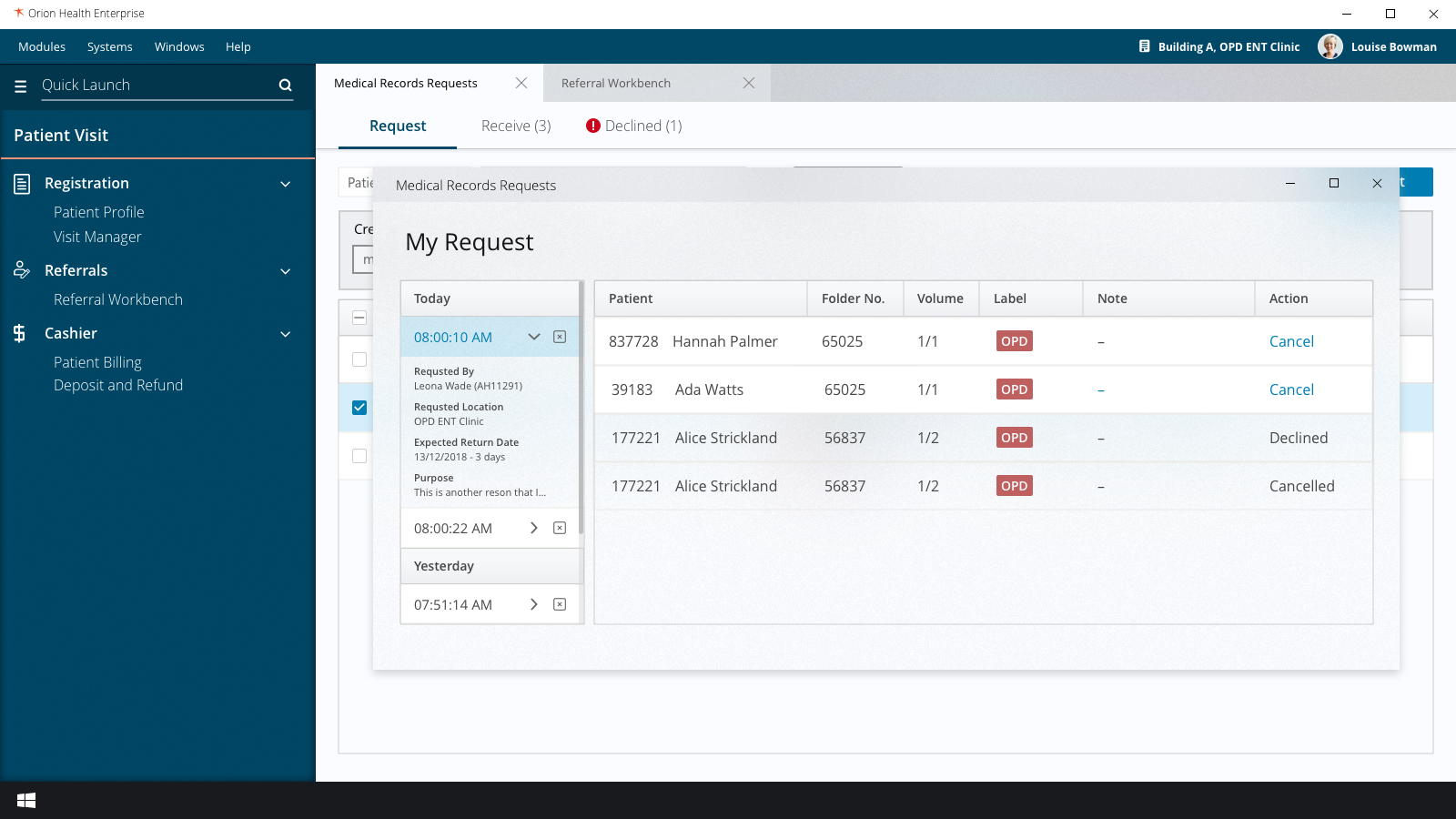



While some functionality was specifically designed for a physical documents, we can improve this tracking concept to support the EMR in the future e.g embed a link to open the EMR program